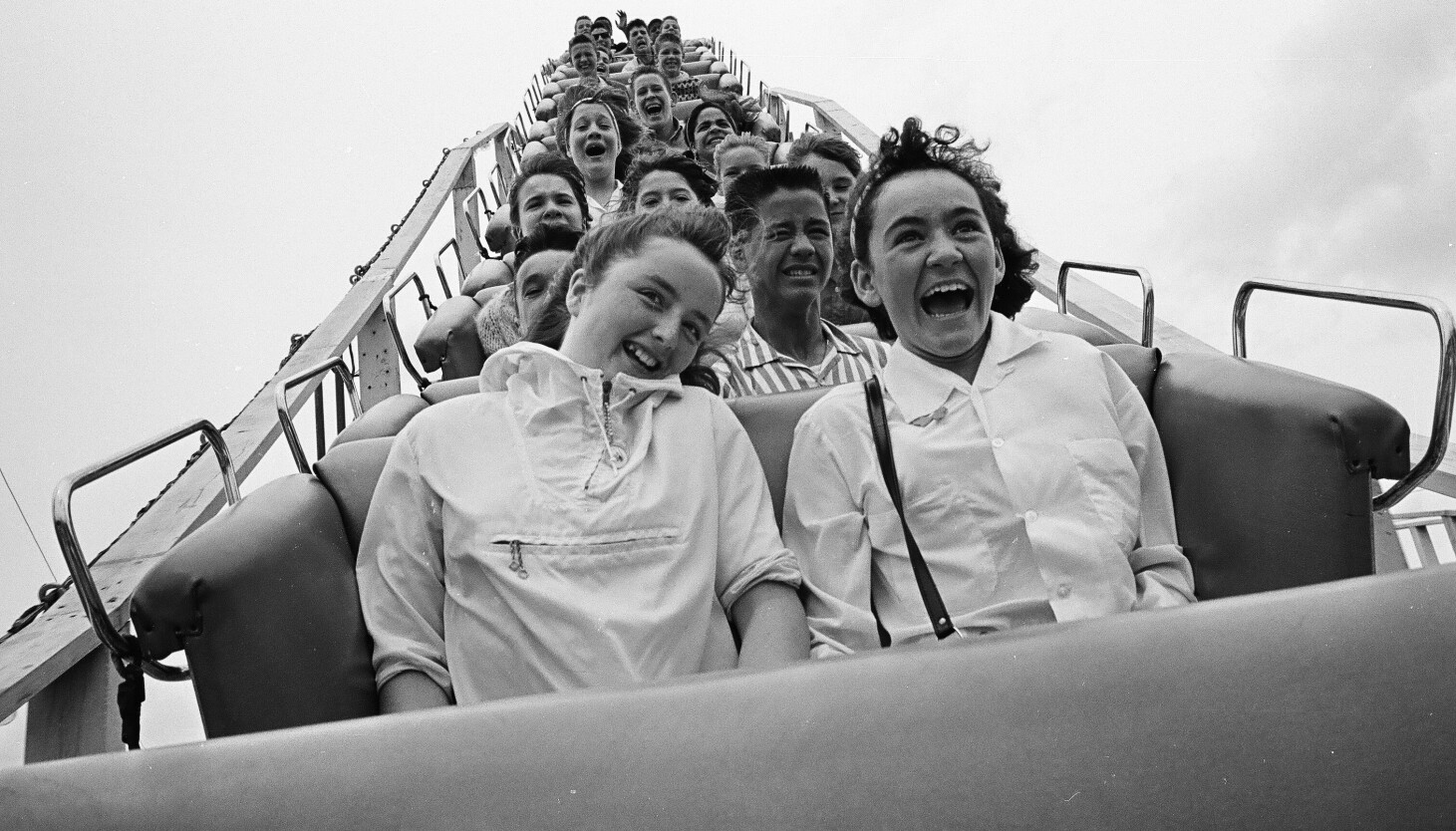For generations of lifelong and longtime Chicago area residents, there was a time in their childhood when they were told Santa Claus didn’t live at the North Pole.
He resided in East Dundee, Illinois, about 40 miles outside the city, in a place called Santa’s Village. For a time, Santa closed up shop there, but he’s been back in business since 2011, in the renamed Santa’s Village & Water Park.
As we’re reminded in the “Amusement Parks” episode of the “Chicago Stories” documentary series on WTTW, the Chicago area has rich and vibrant history of amusement parks, from Riverview Park on the North Side to Kiddieland in Melrose Park to Funtown on the South Side to Ravinia Park in Highland Park, which opened in 1904 and had a relatively short run as “the highest class amusement park in the West” with a casino and rides and a skating pond, before becoming the world-class music venue we know today.
‘Chicago Stories: Amusement Parks’
“Amusement Parks” makes for fascinating and informative viewing, providing a quick-paced but thorough history of amusement parks in the city and surrounding area, featuring great photos and archival footage and memories of folks who frequented some of the parks. Scholarly insights come from historians Tim Samuelson, Cheryl Brown and Nor Cherry, Diane Dillon of the Newberry Library and my old friend and my former radio and TV co-host, the Chicago Tribune journalist Rick Kogan.
As is the case with earlier “Chicago Stories” episodes on Leopold and Loeb and the Black Sox Scandal, and an upcoming Nov. 1 report on Al Capone, the subject matter is familiar and has been dissected for years, yet we always learn something new, always hear fresh and original perspectives.
Following a chronological timeline, the doc marks the Columbian Exposition of 1893 as a great influence on amusement parks, what with the Midway Plaisance, a mile-long zone with rides and games and attractions (some of them promoting stereotypes) and the introduction of the Ferris Wheel.
By the turn of the century, amusement parks were popping up all over the United States, and Chicago had more than any other city. The granddaddy of them all was the legendary Riverview Park, originally a sharpshooters’ club operated by Prussian war veterans before the addition of a carousel and donkey rides and the White Flyer rollercoaster. (By that time, the shooting club was no more.)
Billing itself as the World’s Largest Amusement Park and drawing 7 million visitors every season, Riverview was also quite the party place in the Roaring Twenties, with the beer flowing until Prohibition. From 1904 until 1967, Riverview was a touchstone of childhood and adolescence, and a major influence on amusement parks everywhere. (It’s said Walt Disney consulted with Riverview’s management while he was planning Disneyland in the 1950s).
In addition to the aforementioned Santa’s Village, we also make stops at Paul Boyton’s Water Chutes, which opened in 1894 at 63rd and Drexel and is considered the first modern amusement park; Kiddieland in Melrose Park, with attractions sized and geared for younger children; Funtown on the South Side, which from the late 1960s through the early 1980s was a staple for the Black population, and the behemoth that opened in Gurnee in 1976 as Marriott’s Great America and is now known as Six Flags Great America. The thrill rides and attractions at Great America dwarf anything imagined by the visionaries who built those old amusement parks, but “Chicago Stories” reminds us that generations before the heart-pounding awesomeness of the Maxx Force thrill ride, thousands and thousands of Chicagoans were rendered breathless by the Bobs wooden roller coaster at Riverview Park.

